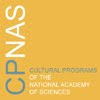Carl Djerassi: Reply to Session One questions
to return to main page of the virtual symposium click here www.visualcultureandbioscience.org
From: Carl Djerassi
Date: Sun, 4 Mar 2007 14:54:34 -0500
(Posted on behalf of Carl Djerassi)
3/4/07 London
As a preamble to my comments, I need to point out that I am addressing the 3 questions from the perspective of a scientist who has turned into a playwright.. Therefore my "artistic application" is play-writing which probably was not even envisaged by the organizers of this symposium.
1) What role do picturing practices play in your discipline of “knowledge production?”
I have now written 8 plays--6 for the commercial theatre and two for pedagogic (classroom) venues--- all of which can be downloaded together with performance schedules, reviews, etc. on http://www.djerassi.com/. All of these plays have a didactic component in terms of "information transmission" which is frowned upon by many theatre scholars as well as practitioners, many of them inherently science-phobic. But since I have chosen to ignore that opposition, visual representation of "practices" are important in my plays. I shall cite just one example: In my play AN IMMACULATE MISCONCEPTION (http://www.djerassi.com/icsi.html), which by now has been translated into 11 languages, the main theme is the practical use of new assisted reproductive IVF techniques and their ethical implications--a theme which is also implied in the play's subtitle "Sex in an Age of technical Reproduction" with its obvious analogy to Walter Benjamin's "The work of Art in an age of technical reproduction." In my play, I discuss ICSI (intracytoplasmic sperm injection)--the direct injection of a single sperm into an egg under the microscope. In real life, the microscope is usually connected to a video monitor and this is also done in my play, where the scientist on stage who is conducting the supposedly first ICSI injection into a human egg, debates this with a physician while the latter observes the procedure on a huge projection wall on the stage facing the audience. In addition, e-mail exchanges and blogs between the scientist and the putative sperm donor are also projected in real life as if they were just typed out.
2) How have your perceptions and attitudes of mind been challenged by current dialogueswithin the “Art-Sci” arenas?
Again, while the "Art-Sci" definition in the above question is probably not meant in the context of theatre, I have addressed that very specifically in terms of "what can theatre do for science" vs. "what can science do for the theatre." Since I have just written a longish article on that topic "When is science on stage really science?"in the January 2007 issue of AMERICAN THEATRE, I refer interested persons to the following web site. http://www.djerassi.com/ScienceStage.html
3) What role have new imaging technologies played in your conceptualizations of visual modeling or artistic application?
My answer to this question is quite short: it is quite important in some instances, but not others.
Carl Djerassi
Click on the link below to leave a comment
to return to main page of the virtual symposium click here www.visualcultureandbioscience.org
Subscribe to:
Post Comments (Atom)

1 comment:
Immaculate Misconception! What a great title! I would love to see the play; it sounds very interesting.
This series of comments reminds me of the similarities between scientific narrative as it is presented in, for example, journal articles and the dramatic narrative evident in theater and film. The common narrative arc for science (introduction, methods, results, discussion, conclusion) depends very much on cause and effect and follows closely the style of narration in film (exposition, some change in knowledge, a goal-oriented plot, investigation, and finally the climax).
I'm curious about the didactic quality often associated with information transmission and its role in pedagogy. Alfred Hitchcock remarked that, “Suspense is the most powerful means of holding onto the viewer’s attention… It is indispensable that the public be made perfectly aware of all the facts involved… [The] conditioning of the viewer is essential to the buildup of suspense”.
Suspense is vital to narration in theater and film and is implicitly embedded in scientific communication both within the discourse of science and between researchers and the "public" audience.
One might argue that the usual style is a broad kind of suspense that keeps the audience in the dark about what will happen next and creates uncertainty. This kind focuses only on the protagonists so that when anything significant happens, it is a surprise to the viewer. As such, their responses can vary more widely depending their prior knowledge, which may or may not prepare them.
A second kind of suspense keeps the audience attentive through the use of deadlines and frequent shifts in perspective from the protagonist to other "actors" human or non-human.
I'd be curious to hear what theater folks and others who deal with stories and plot structures have to say about the use of these tactics to shape and moderate scientific narration.
http://www.semeiotica.com
Post a Comment